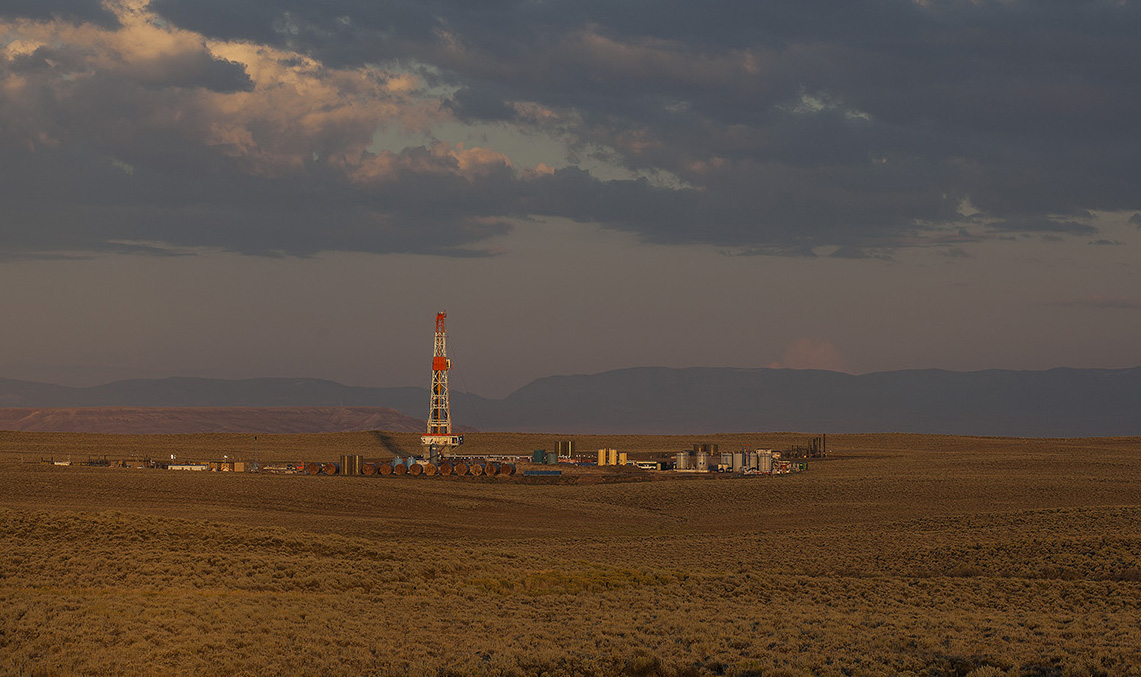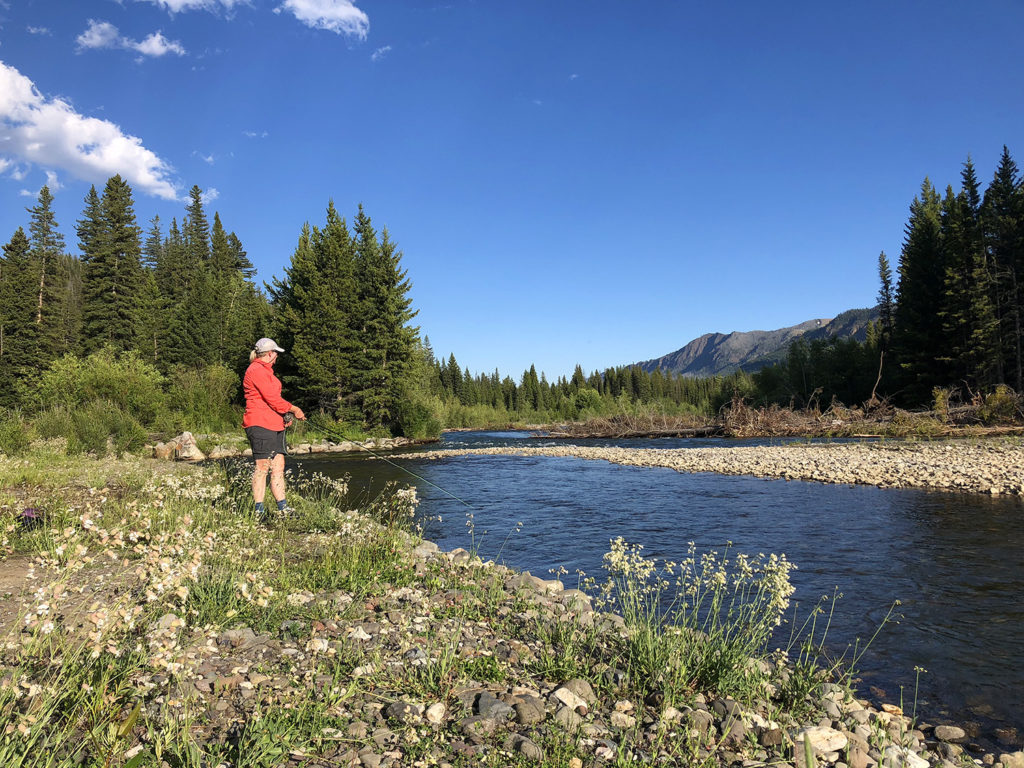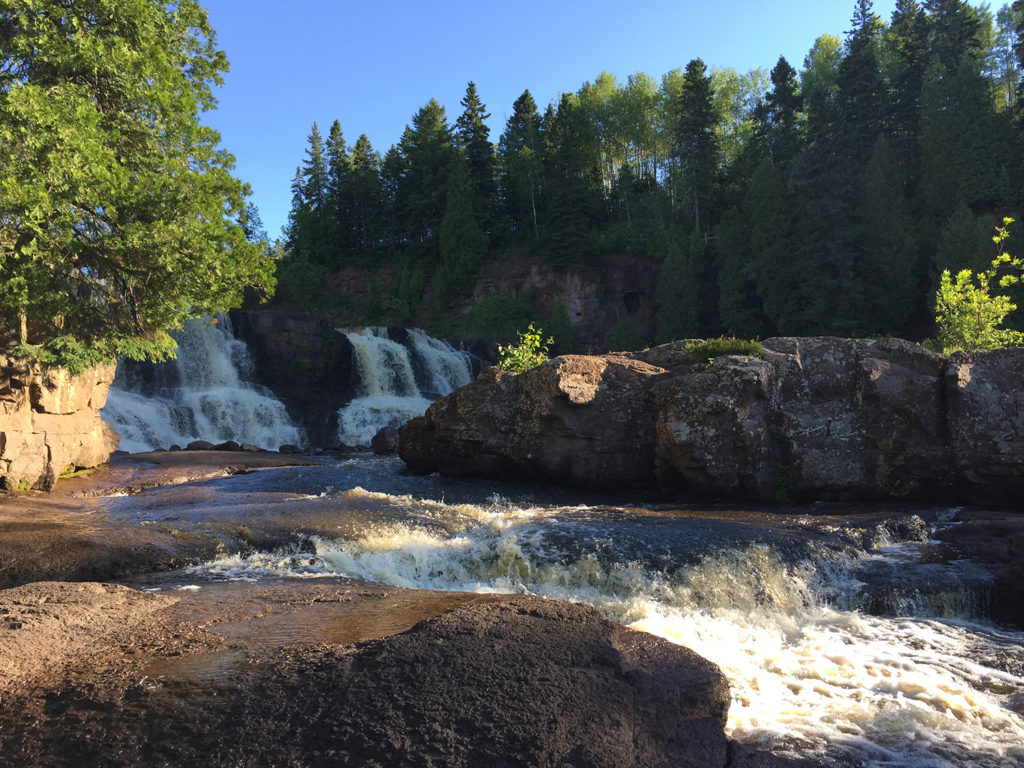What happened?

Drilling rig in the Green River basin, Wyoming. (Photo copyright 2015, Chris Madson, all rights reserved)
AS THE CURRENT ADMINISTRATION DOES EVERYTHING IT CAN TO VITIATE THE NATION’S ENVIRONMENTAL LAWS, GUT FEDERAL agencies like the Environmental Protection Agency, roll back regulations intended to protect our air and water, accelerate leasing of federally managed lands for mining and drilling, prevent adequate management of rare wildlife, and block any response to the growing problem of climate change, professionals in the field wonder: What happened? How can the political winds have shifted so profoundly in little more than a generation?
If you ask, most Americans will tell you they are environmentalists. A general survey administered by the Pew Research Center over the last twenty years has asked for response to the statement: “This country should do whatever it takes to protect the environment.” In July of 1994, 78 percent of Americans surveyed said they agreed with that statement; in March of 2016, 74 percent still agreed.[i]
In the spring of 2018, Pew asked Americans what they thought about federal efforts on a variety of environmental issues. Sixty-four percent said the government was doing too little to “protect air quality;” 69 percent said it was doing too little to “protect water quality in lakes, rivers, and streams;” 63 percent said too little to “protect animals and their habitats;” 57 percent said too little to “protect open lands in national parks and nature preserves;” and 67 percent said too little to “reduce the effects of global climate change.”[ii]

Angler on the Clark’s Fork of the Yellowstone, northwestern Wyoming. (Photo copyright 2018, Chris Madson, all rights reserved)
According to the U.S. Fish and Wildlife Service, more than 100 million Americans over the age of sixteen fished, hunted, and/or watched wildlife in 2016, spending nearly $157 billion in the process.[iii] Broaden the scope of the inquiry to all outdoor recreation, and the statistics become even more startling. Nearly 150 million Americans pursue some kind of outdoor recreation. They spend $887 billion each year, which generates $65 billion in federal tax revenue. The outdoor industry creates 7.6 million jobs.[iv]
The environment hasn’t faded from American consciousness. The breakdown seems to have come somewhere between attitude and action. The pool of American interest in the environment is a mile wide . . . and an inch deep.
Why is that? It’s worth considering the possibility that the carefully designed public relations and political action generated by anti-environment business interests over the last forty years may be to blame. In their superb book, Merchants of Doubt, Naomi Oreskes and Erik Conway analyze the techniques that business interests developed to protect tobacco from increasing regulations. The combination of denial that there was any problem with tobacco, attacks on the veracity of research findings and the discipline of science itself, support of pseudo-scientific “studies,” and delay of actions to control tobacco use turned out to be powerful tools in maintaining the revenue stream from products that had clearly been shown to be dangerous to human health. Oreskes and Conway go on to show how the same techniques have been applied to undermine support for action to reduce acid rain, protect the ozone layer, regulate pesticides, and, most important, control the release of the greenhouse gases.
It’s been argued in some quarters that environmentalists are their own worst enemies. In 2004, Michael Shellenberger and Ted Nordhaus published an incendiary essay they called “The death of environmentalism,” in which they focused on the issue of climate change and argued that the environmental movement was largely responsible for its own failure to influence climate policy. The traditional groups are locked into outmoded tactics from the 1960s and 1970s, the authors argued; they depend on technical “fixes” and fail to articulate a vision, a set of values, for their movement that engages the general public; they refuse to court new allies like labor unions, and they haven’t widened their view of “environmental” issues to include matters like economic growth, adequate health care, poverty, and war. According to Shellenberger and Nordhaus, they’ve become just one more special interest.[v]
Other analysts have argued that, as the environmental movement has grown, it has fractured into camps that all too often work at cross-purposes.[vi] Some point to the aftermath of the first Earth Day when new-wave activists indignantly claimed that they had entirely different— and much more enlightened— attitudes than the old conservation crowd. As the influence of the environmental/conservation community has continued to slip, some observers have identified other fault lines in the movement— “mainstream environmentalism” versus “environmental justice;”[vii] “eco-pragmatism” versus “preservationism;” advocates of “working landscapes” versus champions of “wilderness.”
A few observers with an economics bent have speculated that environmentalism is a luxury only a wealthy people can afford, that even in a nation as prosperous as the United States, support for environmental causes waxes and wanes with the stock market. Following that economic argument into the realm of class, a handful of theorists have offered the view that the decline in the environmental movement’s effectiveness has been driven by the growing inequity in American income that has developed over the last thirty years.
There’s an element of truth in all these arguments, but, I wonder: If these are, in fact, the forces that have stopped the environmental movement in the last forty years, how did the movement gain momentum in the beginning?

J.P. Morgan, banker, financier, and owner of 25 of America’s leading newspapers, in 1915. (Bain News Service, courtesy of the Library of Congress)
If the media effort to undermine environmental reform has had such success at the turn of this century, why didn’t it have greater effect at the turn of the last? It certainly wasn’t for lack of trying. The robber barons of the Gilded Age and their successors wielded powerful influence over news coverage of the day. Some, like the financial magnates Jay Gould and J.P. Morgan simply owned newspapers in major cities; many others, like the Civil War financier and railroad magnate Jay Cooke, went out of their way to court journalists with everything from entertainments to stock options and loans. As the muckrakers of the Progressive Era sharpened their pens against the tycoons, the multi-millionaires responded with bribes, threats, and increasingly sophisticated public relations campaigns.
The magnates of the Gilded Age had a degree of control over the political system of the time that’s hard to imagine today. Until 1913, U.S. senators were selected by state legislatures, not by popular vote; bribery commonly affected the appointment process as well as subsequent deliberations by the chosen senators. Nearly every major city had its political machine, controlled with merciless tactics by a political boss and his backers. It’s hard to imagine a system less susceptible to the rise of grassroots movements, but some of the nation’s most important grassroots movements rose in this era nonetheless.
If comfortable middle-class income is really necessary to generate an environmental groundswell, it’s more than a little surprising that, in 1900, the average household income in America was $438 a year or about $8,000 in modern spending power. At the peak of the Gilded Age, ten percent of Americans controlled 80 percent of the nation’s wealth. That proportion declined significantly in the 1930s, but by 2010, it had crept back up to 70 percent.[viii] The notion that income or relative equality of income somehow drives support for the environment isn’t borne out by history.

Olaus Murie, son of Norwegian immigrants and a leader in American wildlife research and wilderness protection.
Nor is the idea that race and national origin are somehow driving a decline in support for environmental issues. A century ago, the great American melting pot had barely begun its work—large minorities occupied urban enclaves where Old World attitudes still had a powerful presence. Many of these newcomers couldn’t even speak English and were often the focus of brutal discrimination, but these ethnic tensions didn’t seem to undermine the broad American impulse to reduce pollution, preserve natural areas, and protect wildlife; in fact, several immigrants and children of immigrants became leaders in the movement.
The proliferation of environmental organizations in the United States over the last forty years has allowed specific interest groups to focus more closely on issues they care about, and there’s no doubt that some of these goals conflict. However, conflict is nothing new in the environmental movement. The most notorious fight in the movement during the late nineteenth century was the vituperative confrontation between the Sierra Club’s John Muir and Teddy Roosevelt’s secretary of the interior, Gifford Pinchot, but there were many other passionate confrontations over issues as fundamental as the constitutional underpinnings of the federal effort to protect migratory birds; as procedural as the management of national forests, parks, and wildlife refuges; and as ethically motivated as the preservation of wilderness areas and wild rivers.
These days, most of the nation’s major environmental groups belong to cooperative associations to coordinate their efforts on major issues. Messaging and lobbying are carried out at a high level of sophistication. If there is still disagreement across the spectrum of environmental activism, it’s hard to believe it’s any more disruptive now than it was a century or more ago.

Environmental issues like water quality touch every American, regardless of income, vocation, race, city dweller or country cousin. (Gooseberry Falls, Minnesota, photo copyright, 2018, Chris Madson, all rights reserved)
Shellenberger and Nordhaus accuse environmental groups of failing to relate environmental issues to other concerns American have— employment, health care, national security— and ignoring politically powerful groups like labor unions. Early in 2005, Carl Pope, then the executive director of the Sierra Club, published a scathing analysis of the Shellenberger/Nordhaus accusations, pointing out that the Sierra Club has long made common cause with organized labor on broad issues of environmental quality, job creation, and the ongoing viability of major industries.
Pope also argued that, if Shellenberger and Nordhaus had been looking for a more compelling, less technical approach to the broad issues of people and their relation with the planet, they should have spoken with influential thinkers like Wendell Berry, Paul Shepherd, and Terry Tempest Williams, among many others. S&N failed to contact any such leaders in the area of philosophy or art.[ix]
To that, I can only add that the conservation/environmental community has always reached out to a spectrum of Americans with a message that combines practical recommendations with ethical considerations and a vision of a better future. Such elements can be found in the combined work of men like George Perkins Marsh, Frank Forester, and Henry David Thoreau well before the Civil War. Nor have such efforts diminished since the glory days of the early 1970s. They’ve migrated into new media and focused on a host of urban issues as well as the matters of wilderness and wildlife that some detractors have argued are the primary “elitist” interests of the modern environmental movement. Contrary to the argument Shellenberger and Nordhaus make, the outreach may be better than it’s ever been before. I think something else is responsible for the fading American effort to maintain our environment, and I think that “something” is about to change.
NEXT: REBIRTH
[i] Pew Research Center, March 2016 Political Survey. p.14.
[ii] Pew Research Center, May 2018. Majorities see government efforts to protect the environment as insufficient.” May 14, 2018. p.2.
[iii] U.S. Department of the Interior, USFWS, and U.S. Commerce Department, U.S. Census Bureau, 2018. 2016 National Survey of Fishing, Hunting, and Wildlife-Associated Recreation. FHW/16-NAT. p.4.
[iv] Outdoor Industry Association, 2017. The Outdoor Recreation Economy. Boulder, CO.
[v] Shellenberger, Michael and Ted Nordhaus, 2004. The death of environmentalism. The Breakthrough Institute, Oakland, CA.
[vi] Kloor, Keith, 2012. The great schism in the environmental movement. Slate, December 12, 2012.
[vii] Purdy, Jedediah, 2016. Environmentalism was once a social-justice movement. The Atlantic, December 7, 2016.
[viii] Picketty, Thomas, 2014. Capital in the Twenty-first Century. Belknap Press of Harvard University Press, Cambridge, MA. p.348.
[ix] Pope Carl, 2005. An in-depth response to “The death of environmentalism.” Grist. January 14, 2005. https://grist.org/article/pope-reprint/. Accessed June 23, 2018.
Leave a Reply
You must be logged in to post a comment.